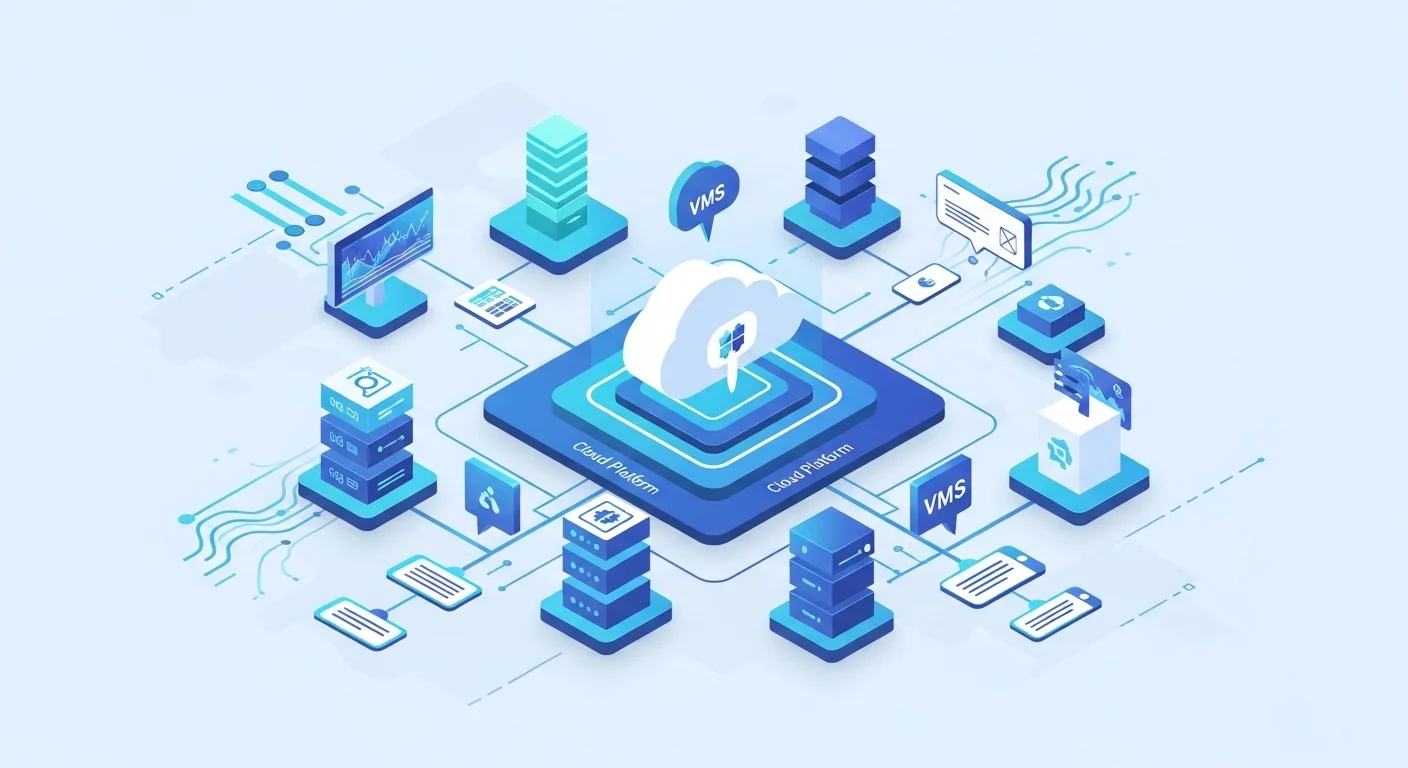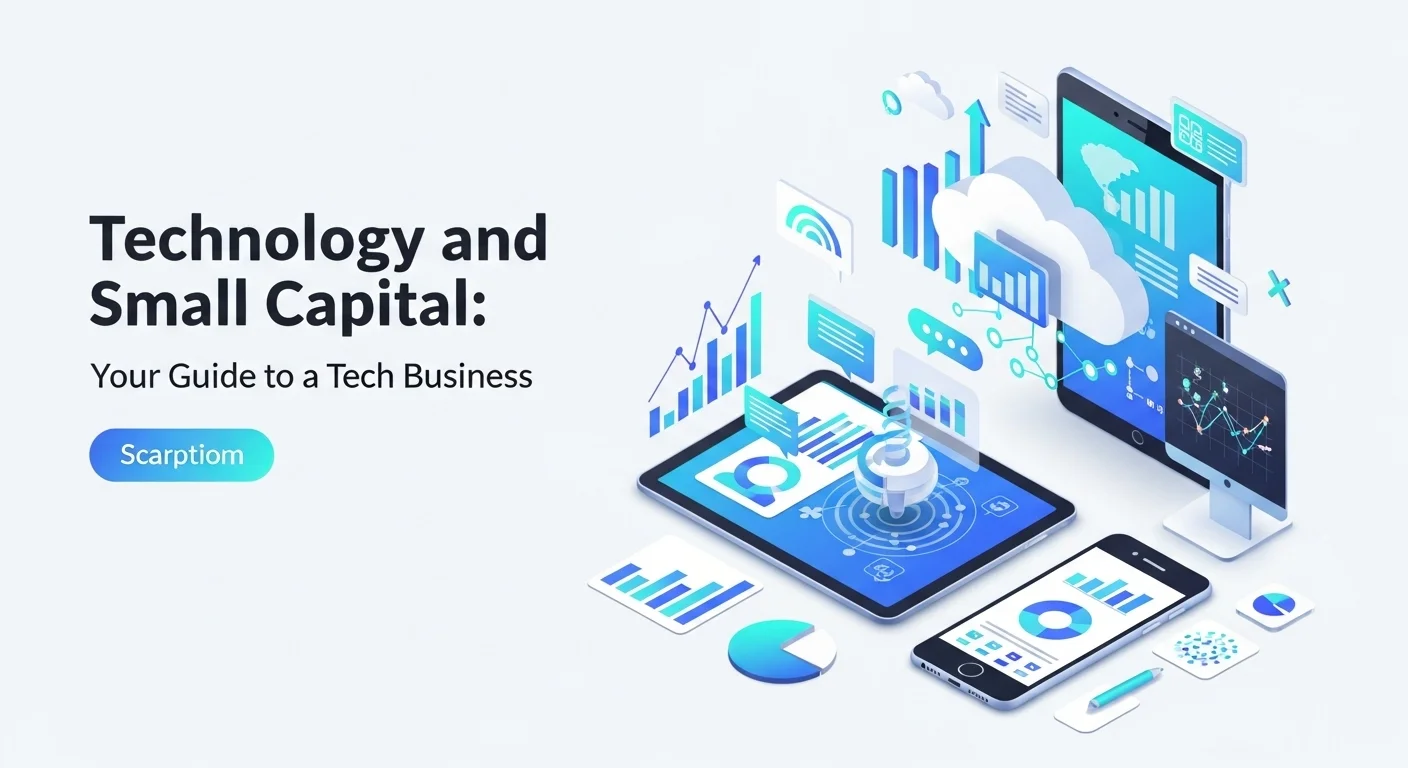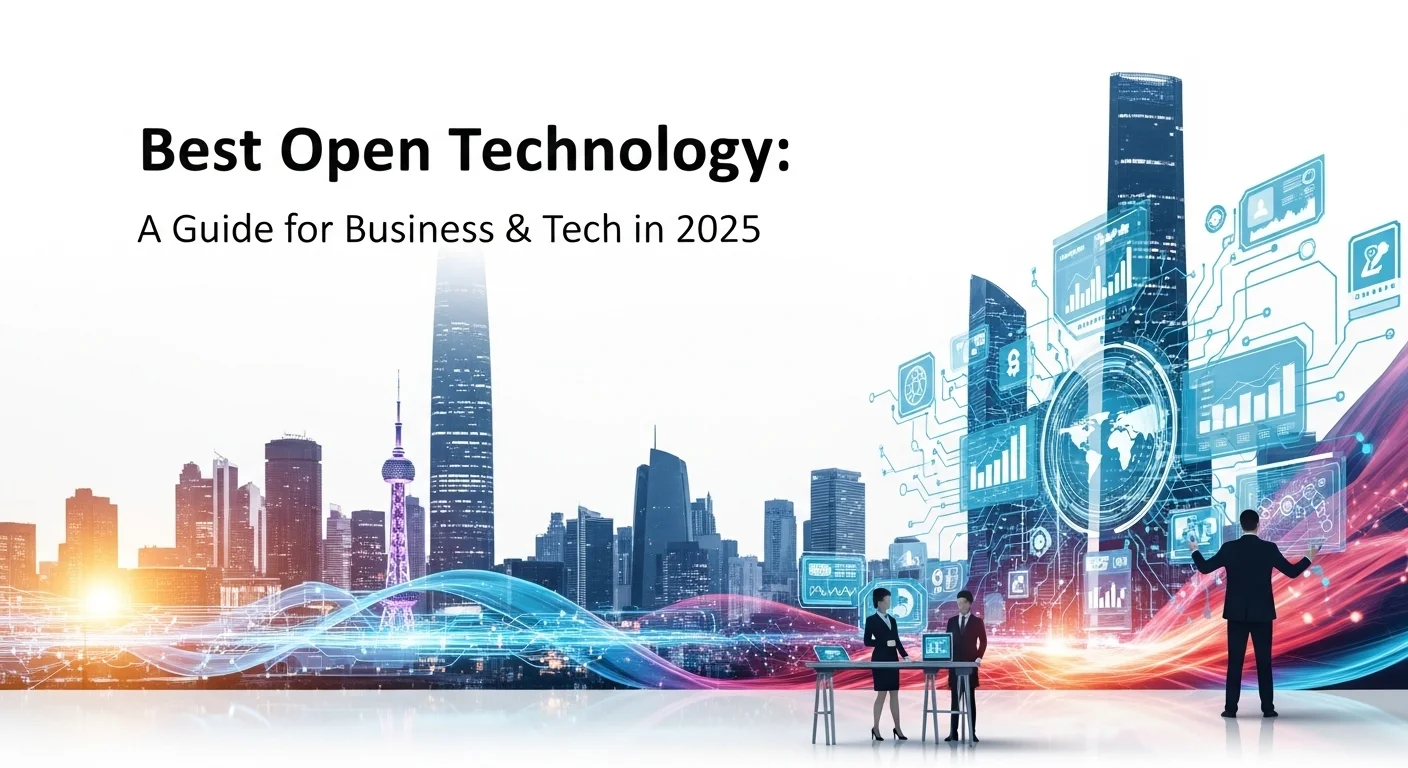Demystifying the Cloud: A Practical Guide to Cloud Platforms for Business Growth

Executive Summary
I’ve spent my career helping businesses navigate the world of technology, and the most common topic these days is the 'cloud.' It's not just a buzzword; it's the foundation of modern business. In this guide, I'll walk you through everything you need to know. We'll start with the basics, like what a cloud platform actually is, and break down the different flavors—IaaS, PaaS, and SaaS—in simple terms. We’ll look at the big players, like Amazon's AWS and the growing Alibaba Cloud, and discuss how specialized fields, like healthcare, are using the cloud to innovate securely. My goal is to give you, whether you're a business leader or a tech enthusiast, the confidence to leverage the cloud for real strategic advantage.
Table of Contents
Table of Contents
What Is a Cloud Platform and Why Does It Matter?
In my years as a solutions architect, I've seen the term 'Cloud Platform' evolve from a niche concept to the absolute backbone of modern business. So, what is it? Put simply, a cloud platform is someone else's computer. More specifically, it’s a collection of powerful servers and hardware in huge data centers, which you can rent access to over the internet. Instead of buying and maintaining your own expensive servers, you can use theirs on a pay-as-you-go basis. This completely changes the economics of starting or scaling a business. It shifts your spending from a huge upfront investment (Capital Expenditure) to a more manageable, ongoing operational cost (Operational Expenditure).
The magic behind this is a technology called virtualization. It allows a single physical server to be sliced into many virtual servers, each acting like its own independent machine. These resources are pooled together, creating a vast, flexible infrastructure that can be distributed to users on demand. The importance of this cannot be overstated. It gives businesses the agility to adapt in a heartbeat. I've seen startups go from zero to millions of users without ever touching a physical server. The ability to scale up for a big launch and then scale back down to save money is a game-changer. Furthermore, these platforms give you instant access to incredible tools like AI, machine learning, and big data analytics that were once only available to giant corporations. A pioneer like Amazon Web Services (AWS) really set the bar, offering a massive menu of services that has become the industry standard.
The Core Service Models: IaaS, PaaS, and SaaS Explained
To really get the cloud, you need to understand its three main 'flavors': IaaS, PaaS, and SaaS. I like to explain it with a pizza analogy. Each model offers a different level of 'do it yourself' versus 'done for you'.
Infrastructure as a Service (IaaS): This is the 'take and bake' pizza. The cloud provider gives you the fundamental building blocks: the virtual servers, storage, and networking (the oven, the dough, the cheese, the sauce). You have control over the operating system and what you build on top of it. You're responsible for making the pizza yourself. This offers the most flexibility and is perfect for companies wanting to move their existing systems to the cloud. Amazon Web Services (AWS)'s Elastic Compute Cloud (EC2), which lets you rent virtual servers, is a classic example of IaaS.
Platform as a Service (PaaS): This is like ordering a pizza for delivery, but you have to set the table and get the drinks. The provider manages the servers, the operating systems, and the development tools. You just focus on building and running your application—your 'pizza party'. A PaaS environment gives developers a complete workshop to build, test, and deploy software without worrying about the underlying maintenance. It dramatically speeds up development, which is why it's so popular for creating new applications and services directly on a cloud platform.
Software as a Service (SaaS): This is like going out to a restaurant for pizza. You just show up and eat. The provider handles everything—the hardware, the software, the updates, the security. You simply log in and use the application through your web browser. Think of tools you probably use every day, like Google Workspace, Salesforce, or Dropbox. For most businesses, SaaS is the easiest and most convenient way to access powerful software without any IT headaches.
Deployment Models: Finding Your Fit
Next, you have to decide where your cloud will live. This is what we call the deployment model.
Public Cloud: This is the most common model. The infrastructure is owned by a provider like Microsoft Azure or Alibaba Cloud and shared by many different organizations. The massive scale means lower costs and a huge menu of services for you.
Private Cloud: This is a cloud environment used exclusively by one organization. It offers the highest level of security and control, which is why it's often chosen by government agencies or financial institutions with very strict compliance rules.
Hybrid Cloud: This approach gives you the best of both worlds, mixing a private cloud with a public one. I've helped many clients set this up. They keep their most sensitive data secure on their private cloud while using the public cloud's power and affordability for less critical tasks or to handle sudden traffic spikes.
Multi-Cloud: This just means using services from more than one cloud provider. It's a smart strategy to avoid being locked into a single vendor and allows you to pick the best tool for the job from different providers. For example, you might use AWS for its computing power and Google Cloud for its data analytics expertise.
A Closer Look: The Specialized World of Healthcare Clouds
While the models above cover most uses, some industries need something more. Healthcare is a perfect example. A healthcare cloud platform is specifically built to handle the incredibly strict security and privacy rules of the medical world, like HIPAA in the U.S. These platforms provide a fortress-like environment for patient data, with heavy-duty encryption, strict access controls, and detailed audit trails to track who touches what, and when. But it's about more than just security. These platforms are fueling the future of medicine. They enable telehealth, help AI programs analyze medical scans to find diseases earlier, and allow researchers to securely share and analyze massive datasets to discover new cures. It's a powerful reminder that the cloud isn't just about business efficiency; it's a technology that can genuinely improve and save lives.

Choosing Your Path: A Deep Dive into Cloud Providers and Strategies
Once you understand the basics, the next big question I always get from clients is, 'Which cloud platform is right for me?' The truth is, there's no single best answer. It's about matching the provider's strengths to your business's story and goals. Let's take a look at the major players and then dive into the technical strategies that bring a cloud vision to life.
Comparing the Titans: Amazon, Microsoft, Google, and Alibaba
The cloud market is dominated by a few giants, and each has its own personality and areas where it shines.
Amazon Web Services (AWS): The original pioneer and still the market leader. AWS has the most extensive toolbox by far. If there's a service or feature you can imagine, they probably have it. In my experience, organizations that want the widest array of mature services and a massive support community often start here. Their global footprint is unmatched, which is critical for businesses that need to deliver services with low latency worldwide.
Microsoft Azure: Azure's superpower is its deep integration with the Microsoft ecosystem. For any company that runs on Windows Server, Office 365, and Active Directory, moving to Azure feels like a natural extension of their existing IT world. They've also invested heavily in hybrid cloud solutions, making it easier for businesses to bridge their on-premises data centers with the cloud. I find it’s often the go-to choice for large enterprises.
Google Cloud Platform (GCP): Google brings its A-game in the areas it's famous for: data, analytics, machine learning, and networking. Their tool, BigQuery, is a beast for analyzing enormous datasets. I recommend GCP to clients who are data-driven and want to leverage cutting-edge AI. They are also the creators of Kubernetes, the leading technology for managing modern applications, giving them a home-field advantage in that space.
Alibaba Cloud: If your business has its sights set on Asia, especially China, you need to know about Alibaba Cloud. It's the dominant force in that region, offering a suite of services that rivals the others. More importantly, they understand the local market and regulatory landscape, which can be a major hurdle. Their ties to Alibaba's massive e-commerce and logistics network offer unique advantages for retail companies operating in that part of the world.
Technical Deep Dive: Migration, Containers, and Serverless
Choosing a provider is just the beginning. The real work is in how you build and manage your applications on the platform.
Cloud Migration Strategies: Moving to the cloud isn't as simple as flipping a switch. The most common approach is 'Lift and Shift,' where you move an application as-is. It's fast, but you don't get all the cloud benefits. A better, though more involved, strategy is to 'Refactor' or 'Re-architect' the application to take advantage of cloud-native features, often using a PaaS model. This improves performance and scalability in the long run.
Containerization and Kubernetes: This technology has been a revolution. Think of a container (like Docker) as a standardized box that holds your application and everything it needs to run. This box can be moved from a developer's laptop to the cloud and run exactly the same way. Kubernetes is like the master conductor of an orchestra of these containers. It automates their deployment, scaling, and management, making complex applications much easier to run. All major providers offer managed Kubernetes services, which I highly recommend to reduce operational headaches.
Serverless Computing: This is the next step in abstraction. With serverless, you just write your code in small functions, and the cloud provider handles everything else. You don't manage any servers at all. It's like a light switch: the code only runs when it's triggered, and you only pay for the split seconds it's active. This is incredibly cost-effective for workloads with unpredictable traffic.
Business Solutions: Taming Costs and Building for Industries
Leveraging the cloud is as much a business challenge as a technical one. Managing costs and using industry-specific tools are key to getting the most out of your investment.
FinOps (Cloud Financial Management): The pay-as-you-go model is a double-edged sword. It's flexible, but costs can spiral out of control if you're not careful. FinOps is a practice I help companies implement to bring financial discipline to their cloud spending. It's about creating visibility, allocating costs to the right teams, and constantly optimizing to eliminate waste. It's an essential skill for any business operating at scale in the Cloud Financial Management.
The Rise of the Specialized Healthcare Cloud Platform: We touched on this earlier, but it’s worth repeating. The development of platforms tailored for healthcare shows how mature the cloud market has become. These aren't just about meeting compliance like HIPAA; they are ecosystems. They help different medical record systems talk to each other, provide secure backbones for telehealth apps, and offer AI tools to help doctors make faster, more accurate diagnoses. These industry-specific solutions transform technology from a simple tool into a strategic partner, directly improving patient care.

Your Cloud Toolkit: Expert Tips for Security, Cost, and Performance
Getting onto a cloud platform is the first step. Thriving there is an ongoing journey of optimization and vigilance. To truly master the cloud, you need to cultivate a culture of continuous improvement. Here are the practical tips and strategies I share with every client to help them build a secure, cost-effective, and high-performing cloud environment, whether they're on AWS, managing a specialized healthcare platform, or building their own PaaS.
Mastering Cloud Security: A Proactive Approach
Security is job zero. The cloud provider secures the 'cloud,' but you are responsible for securing what you put *in* the cloud. Here’s how to do it right.
1. Embrace the Principle of Least Privilege: My number one rule is don't hand out the master keys. Grant users and services only the exact permissions they need to do their job, and nothing more. Use the provider's Identity and Access Management (IAM) tools to create fine-grained policies and audit them regularly.
2. Build Digital Fences: Use Virtual Private Clouds (VPCs) to create isolated sections of the cloud for your resources. Then, use security groups and network access control lists (NACLs) as your virtual firewalls. The best practice is to deny all traffic by default and then poke specific, deliberate holes for the traffic you need.
3. Encrypt Everything: Assume someone is always trying to listen. All data should be encrypted, both when it's sitting on a disk (at rest) and when it's moving over the network (in transit). Cloud providers give you the tools to do this; use them.
4. Be Your Own Watchdog: You can't protect what you can't see. Use cloud-native tools like Amazon GuardDuty or Azure Sentinel. They use AI to monitor for suspicious activity and can alert you in real-time if something seems off. This is your digital alarm system.
5. Stay Compliant: For industries like healthcare, regular compliance checks are non-negotiable. Use automated tools to audit your setup against standards like HIPAA or CIS. This is crucial for protecting sensitive data on a healthcare cloud platform and avoiding massive penalties.
Optimizing for Cost and Performance
A cloud bill can be shocking if you don't manage it. At the same time, you need to ensure your applications are running smoothly. It's a balancing act.
1. Right-Size Your Resources: The most common money pit I see is overprovisioning—paying for a V8 engine when you only need a four-cylinder. Analyze your usage data. If a server is consistently bored, shrink it down to a smaller, cheaper size. This simple step can save a fortune.
2. Use the Right Pricing Model: Don't just accept the default on-demand price. For steady workloads, commit to a one- or three-year plan with Reserved Instances or Savings Plans to get huge discounts. For tasks that can be interrupted, use Spot Instances to access spare capacity for pennies on the dollar.
3. Automate Your Savings: There's no reason your development and test environments need to run 24/7. Automate scripts to shut them down at night and on weekends. Likewise, use auto-scaling to automatically add or remove servers based on traffic, so you're only paying for the power you need at any given moment.
4. Choose the Right Storage Tier: All data is not created equal. Store frequently used 'hot' data on fast, high-performance storage. Move less-used data to cheaper tiers. For archival data you rarely touch, use 'cold' storage like Amazon S3 Glacier. Tiering your data is a simple way to slash storage costs.
Advanced Strategies and Business Tools
Ready to level up? These advanced strategies are what separate the amateurs from the pros.
1. Adopt Infrastructure as Code (IaC): Stop clicking around in a web console. Define your entire cloud setup in code using tools like Terraform or AWS CloudFormation. This creates a digital blueprint that is versioned, repeatable, and automated. It dramatically reduces human error and makes disaster recovery a breeze.
2. Build a Developer-Friendly Platform: If you have a large development team, consider building your own internal cloud platform as a service (PaaS). This gives your developers a self-service portal to quickly get the resources they need without getting bogged down in infrastructure complexity. It's a huge productivity booster.
3. Explore Multi-Cloud and Hybrid Strategies: Don't put all your eggs in one basket. A multi-cloud strategy builds resilience and lets you pick the best tool for each job from different providers. A hybrid strategy, connecting your own data center to the cloud, is perfect for when you need to keep some things in-house for security or latency reasons.
4. Never Stop Learning: The cloud world moves incredibly fast. Encourage your teams to stay curious and keep learning. A great external resource I often recommend for industry news and trends is CloudTech News. An informed team is your most powerful asset in this ever-changing landscape.
Expert Reviews & Testimonials
Sarah Johnson, Business Owner ⭐⭐⭐
The information about Cloud Platform is correct but I think they could add more practical examples for business owners like us.
Mike Chen, IT Consultant ⭐⭐⭐⭐
Useful article about Cloud Platform. It helped me better understand the topic, although some concepts could be explained more simply.
Emma Davis, Tech Expert ⭐⭐⭐⭐⭐
Excellent article! Very comprehensive on Cloud Platform. It helped me a lot for my specialization and I understood everything perfectly.



